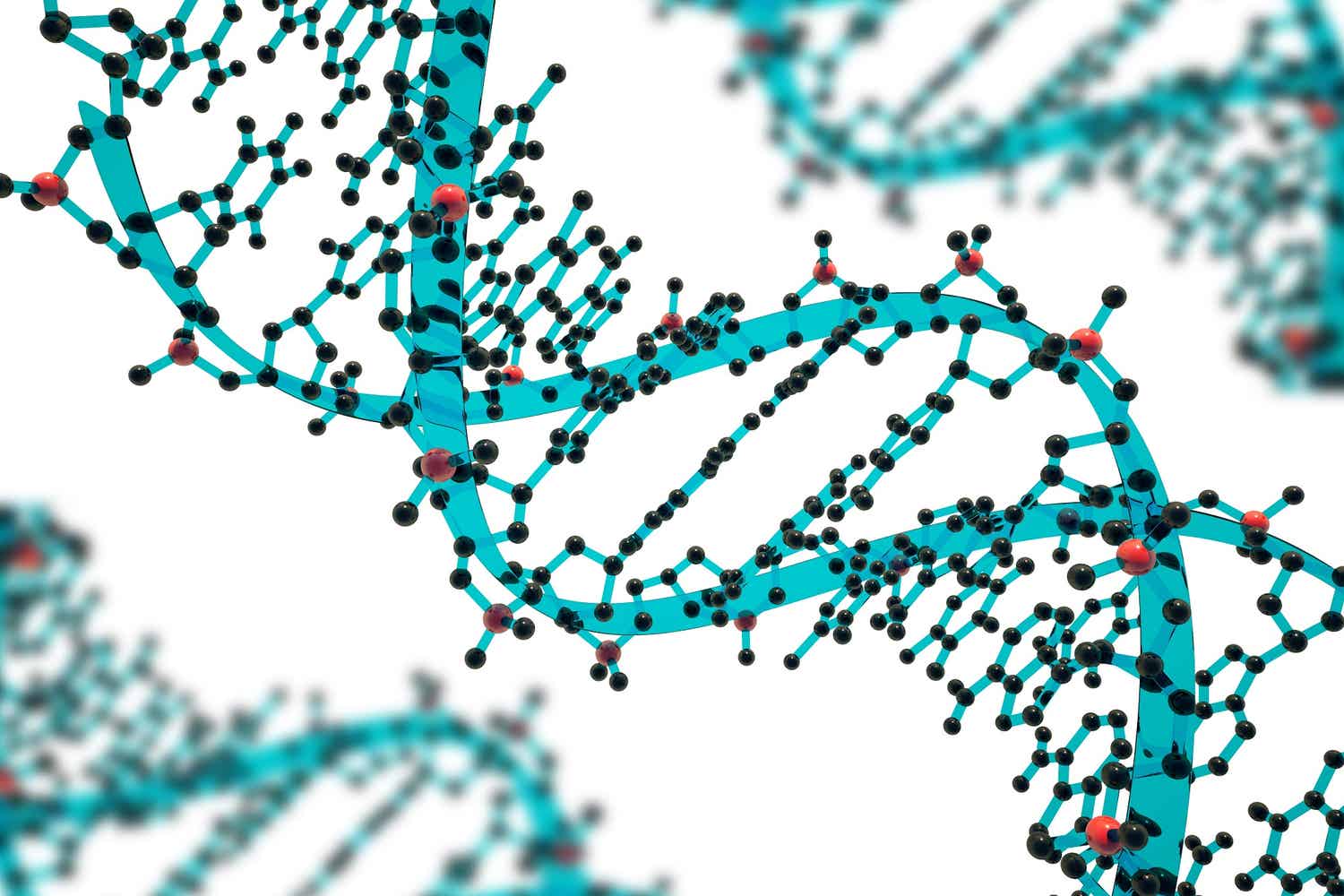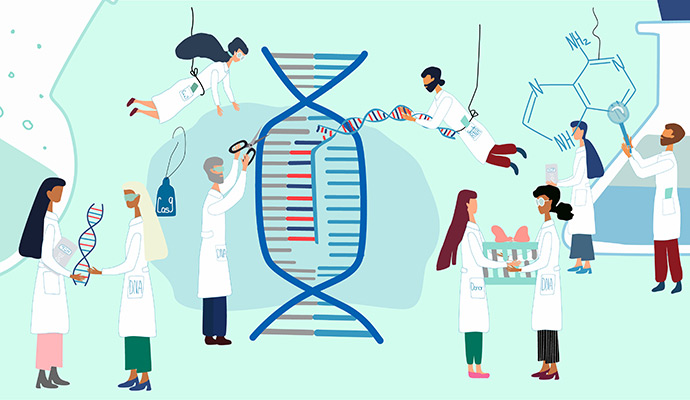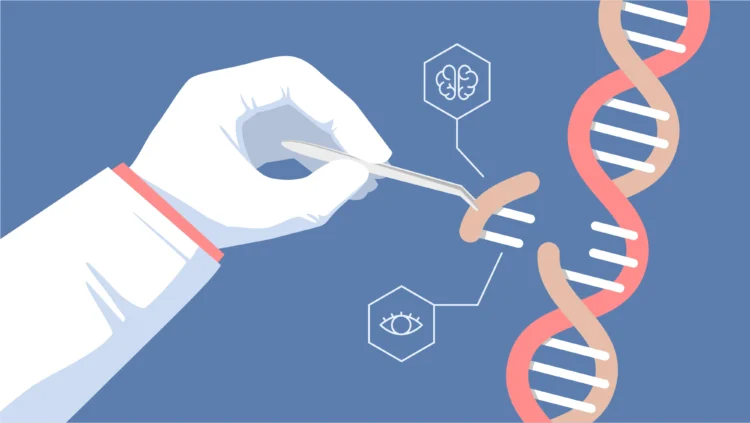This article discusses the latest advancements in gene editing technology and its implications for healthcare. It examines the science behind gene editing, the various gene editing techniques, and the ethical and societal implications of this technology. Additionally, it explores the current and future applications of gene editing in healthcare, including personalized medicine, genetic diseases, and cancer treatment.
Gene editing is a revolutionary technology that enables scientists to make precise and targeted changes to an individual’s genetic code. This technology has the potential to revolutionize healthcare by offering new treatments for genetic diseases and cancer, as well as personalized medicine.
However, the use of gene editing raises ethical and societal questions that need to be addressed. This article explores the latest advancements in gene editing technology and their implications for healthcare.
The Science Behind Gene Editing
Gene editing is a powerful and precise technology that involves making changes to an individual’s DNA sequence. At its core, gene editing relies on a set of tools that can be used to cut and modify DNA at specific locations. The most commonly used gene editing tool is CRISPR-Cas9, which is a bacterial defense mechanism that has been adapted for use in gene editing.

CRISPR-Cas9 works by using a guide RNA to target a specific location in the DNA sequence, after which the Cas9 protein cuts the DNA at that location. Once the DNA is cut, the cell’s repair machinery can be used to make changes to the DNA sequence, either by adding, deleting, or replacing specific genes.
The ability to make precise and targeted changes to the DNA sequence has revolutionized gene editing, making it faster, cheaper, and more accessible than ever before. However, the process of gene editing is not always straightforward.
There are several challenges and limitations that need to be addressed, such as the risk of off-target effects, where the gene-editing tool cuts the DNA at unintended locations, potentially leading to unintended consequences. Additionally, gene editing can be expensive and time-consuming, making it inaccessible to many patients.
To overcome these challenges, scientists are working on developing new and improved gene editing techniques. For example, researchers are exploring the use of other gene editing tools, such as TALENs and ZFNs, which can be used in certain applications where CRISPR-Cas9 is not effective. Additionally, scientists are working on improving the accuracy and specificity of gene editing tools to minimize off-target effects.
The Various Gene Editing Techniques
There are various gene editing techniques that can be used for different applications. Besides CRISPR-Cas9, there are other gene editings tools like TALENs and ZFNs.
These techniques have been used in gene therapy to cure genetic diseases and improve the effectiveness of cancer treatments. Additionally, scientists are working on developing new gene editing techniques that are more precise and targeted.
The Ethical and Societal Implications of Gene Editing
Gene editing raises ethical and societal questions, such as the potential to create designer babies or alter the genetic makeup of future generations.
There are concerns about the safety and efficacy of gene editing, as well as the potential for it to exacerbate social inequality. As such, gene editing is a highly debated topic that requires careful consideration.
Current and Future Applications of Gene Editing in Healthcare
Gene editing has a wide range of applications in healthcare, including personalized medicine, genetic diseases, and cancer treatment. In personalized medicine, gene editing can be used to create custom treatments tailored to an individual’s genetic makeup.
For genetic diseases, gene editing can be used to cure or treat conditions like sickle cell anemia, cystic fibrosis, and Huntington’s disease. In cancer treatment, gene editing can be used to develop new and more effective treatments.
Challenges and Limitations of Gene Editing
Gene editing has the potential to revolutionize healthcare by providing precise and targeted treatments for genetic diseases. However, the technology also comes with several challenges and limitations that need to be addressed to maximize its potential.
One of the main challenges of gene editing is the risk of off-target effects. Off-target effects occur when the gene-editing tool cuts the DNA at unintended locations, potentially leading to unintended consequences.

This can include mutations or changes to other genes, which may cause adverse effects on the patient’s health. Scientists are working on improving the specificity of gene editing tools to minimize off-target effects and increase the safety of the procedure.
Another challenge of gene editing is the delivery of the editing tool to the target cells. The delivery system needs to be effective and efficient in getting the editing tool into the desired cells.
This can be particularly challenging for certain types of cells, such as neurons or muscle cells, which are difficult to target. Researchers are developing new delivery systems, such as nanoparticles, to improve the efficiency of gene editing in these types of cells.
Gene editing also raises ethical concerns. The ability to modify the DNA of an individual raises questions about the potential misuse of the technology. It raises concerns about creating “designer babies” and modifying traits beyond those related to genetic diseases.
Scientists, policymakers, and society as a whole must have discussions about the ethical implications of gene editing to ensure that it is used appropriately and responsibly.
Another limitation of gene editing is its cost and accessibility. Currently, gene editing is an expensive and time-consuming procedure that is not accessible to many patients.
Making gene editing more accessible to a wider range of patients will require reducing costs, improving delivery systems, and increasing the efficiency of editing tools.
Finally, gene editing technology is relatively new, and there is still much that is not known about its long-term safety and efficacy. Long-term studies are needed to determine the safety and effectiveness of gene editing, and ongoing monitoring is required to ensure the safety of patients who undergo gene editing procedures.
Conclusion
Gene editing is a powerful and revolutionary technology that has the potential to transform healthcare. It offers new treatments for genetic diseases and cancer, as well as personalized medicine. However, the use of gene editing raises ethical and societal questions that need to be addressed. As such, there is a need for continued research and development to ensure the safe and ethical use of gene editing in healthcare.


























